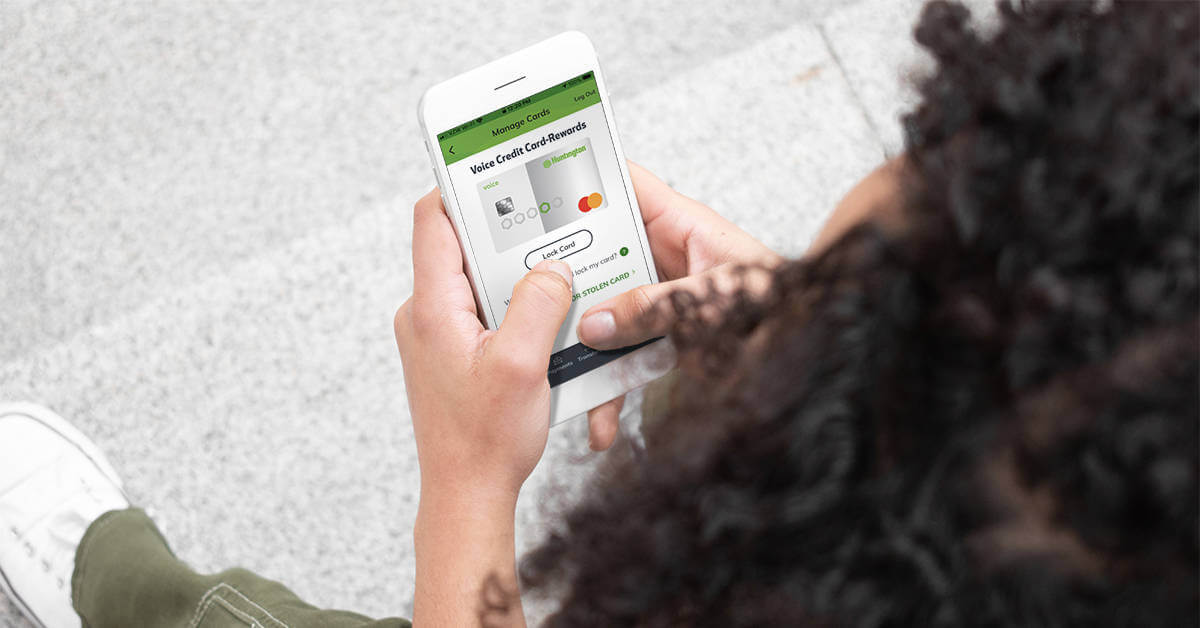Emergency Funds: How Much Should You Save
Learn more about how you can build an emergency fund, why you may need one, how much you should save for emergencies, and where to keep the money.

Life can be full of some expensive surprises. Unfortunately, most of us don’t include these unexpected expenses into our monthly budgets. In fact, 37 percent of surveyed U.S. adults faced with an unexpected $400 expense would likely have difficulty covering the expense†.
Keeping your finances on track can be stressful, even when life is running smoothly. An unexpected event—a major car repair bill, a broken furnace, or a period of unemployment—can be disastrous and send you to a payday lender, cause you to slash your food or health spending, or cut into your ability to pay your rent or mortgage. This is why you need an emergency fund.
How much should you have in emergency savings?
The amount of money you should have in an emergency fund varies from household to household. Consider your lifestyle and use your experiences to help form a plan.
What kind of unexpected expenses have you handled over the past year? How much did they cost? Have you needed to put expenses on a credit card because you needed something, and didn’t have another way to cover the costs? Have you borrowed money to help handle an emergency?
To start, review your online bank and credit card statements to help you remember what you’ve dealt with in the past. After you’ve reviewed this information, ask yourself how much money you would have needed to handle these expenses without going into debt. That number can be a starting point for your emergency fund.
How to Build an Emergency Fund
Although this may be the last savings goal you want to focus on, it can be critical when the unexpected happens. We have five steps to help you build an emergency fund.
Step 1: Reduce your spending.
First, resist the urge to beat yourself up for any past spending indiscretions or not already having an emergency fund. Start today and remember that Huntington is here to help. Let’s focus on building a stronger financial future for you.
Before you can save money, you need to spend less than you earn. Here are few tips to help.
- Create a Budget: By doing this, you can see the money you have coming in and going out. You can use Spend Analysis and Spend Setter℠ to identify available spending you might be able to cut or add to your savings goals.
- Negotiate Your Monthly Bills: You may be able to save some money on regular household bills like your auto and home insurance or internet bill. Contact your service providers to see if they can reduce your monthly rate based on your customer relationship, minimal usage (i.e., safe driving), or if they have any existing promotional or bundle offers available.
- Search for Savings: Cooking at home, shopping in bulk or by season, buying items on sale, repairing items instead of replacing them, and buying quality goods that don’t need to be replaced, or replaced less often, can help reduce costs over time.
- Address Personal Debt: Debt can be another big expense. Take a critical look at your debt, especially credit card debt. We have a debt versus savings calculator to help you. If your debt situation feels overwhelming, you may want to consider a debt consolidation loan. We have a debt consolidation calculator that can help, and you can talk to a banker at Huntington about this option too.
Open a Huntington Savings Account
Savings accounts are great for setting aside cash for big purchases, like buying a house, or for emergency funds. You can set up scheduled transfers from your Huntington checking account to your savings account, which can help you reach your savings goals even faster.
Learn More
Step 2: Plan for the future.
After you've created a budget and reduced your spending, you can now think about the future.
Prepare your finances for an emergency expense by looking at your lifestyle and belongings to anticipate future expenses. Are appliances or your HVAC unit getting old?
Adrian Vestemean, branch manager at Huntington, urges homeowners who have had difficulty building emergency funds to consider upgrading existing insurance policies or adding supplemental insurance that can help guard against unexpected costs§.
Do you live in an area that experiences natural disasters? Sometimes, when the source of the expenses is a natural disaster—for example, damage from a hurricane or flood—the Disaster Assistance Improvement Program can help guide you in finding out if you may be eligible for local, state, or federal government resources. Additionally, you can contact your insurance agent and review your coverage. The more you understand about what is covered and what isn't covered by your insurance policy, the better you can prepare for a natural disaster.
Step 3: Open a savings account.
You never know when an emergency will happen. So, where you keep your emergency fund is important. The account for an emergency fund needs to be easily accessible and earn interest, which is why a savings account can be a great option.
By opening a savings account, you can have immediate access to your cash, while also earning interest on your deposits. Compare our savings accounts and talk with your Huntington banker about which account option would work best for you.
Step 4: Set-up an emergency fund.
You've reduced and anticipated expenses, have a clearer idea of how much to save, and opened a savings account, now it's time to build and grow your emergency fund.
Build your savings by setting aside half of any windfall (an unexpected financial gain) into your emergency fund. Unexpected money can be a treat, so if you get a tax refund, salary bonus, inheritance, or a birthday check, you may want to spend it. Just make a commitment to put half of any surprise dollars into your emergency fund.
At Huntington, we have digital tools and online banking services to help you achieve your goals. For example:
- Direct Deposit: Have your paycheck directly deposited into your account by splitting it between your checking and savings. This “set it and forget it” way of automatic saving can make it easier to build up your savings and emergency fund. Talk to your HR department about adjusting your direct deposit.
- Emergency Fund Calculator: A budgeting calculator to help you fine-tune your emergency fund. We suggest three months of expenses as a starting point, but you might need more.
- Money Scout®: A savings tool that analyzes your spending habits, income, and upcoming expenses to find money you're not using in your checking account—from $5 to $50—and then moves it to your savings, automatically once you enroll‡. You can get alerts¥—text, email, or push notifications—whenever a transaction is made.
- Savings Goal Getter℠: A savings tool where you can add up to 10 goals, plus an emergency fund to help you track your progress and get you there faster.
- Spend Analysis: A tool that can show you where your money is going and can help you figure out how much you need in an emergency fund.
- Spend Setter℠: A budgeting tool that can let you know if you've gone over budget, which might indicate an emergency expense or a need for you to adjust your budget.
Step 5: Increase your income.
This is much easier said than done, but there are ways you can set yourself up for future financial success.
Do an inventory of your less obvious skills, because some may be marketable. For example, "if people are constantly coming to you for help with their resumes or whatever it might be, that tells you that you have a viable way to make extra money," says Lynnette Khalfani-Cox, The Money Coach and author of Zero Debt: The Ultimate Guide to Financial Freedom‡‡.
You can also invest in yourself. Don't be afraid to apply for a better paying job or negotiate for a higher paying salary in your current role. Take advantage of professional development courses or any tuition-assistance offered by your employer.
Importantly, when your earnings increase, attempt to keep the same budget you were using on a smaller paycheck. That way, you can use the additional money to start building your savings.
Bottom line, building an emergency fund is not a one-size-fits-all method. It's there to help you overcome financial hurdles like unexpected expenses or a job loss. If you're concerned that you're not on the right track, or need additional help about how to save money, talk to a Huntington banker.
† Federal Reserve, “Report on the Economic Well-Being of U.S. Households in 2019, Featuring Supplemental Data from April 2020,” May 2020.
§ Interview with Adrian Vestemean, Huntington National Bank.
‡ Money Scout automatically schedules transfers from your selected checking account and credits your selected savings account. A money market account (MMA) cannot be a selected savings account for use with Money Scout. A scheduled transfer may be canceled before midnight ET on the day it is scheduled. Transfer amounts and frequency may vary and will reduce the money available in your account to cover other transactions. You are responsible for ensuring your account has sufficient funds. You may be charged overdraft fees if your account falls below $0. Subject to eligibility, terms and conditions, and other account agreements.
¥ Message and data rates may apply.
‡‡ Interview with Lynnette Khalfani-Cox, April 2019.
The information provided in this document is intended solely for general informational purposes and is provided with the understanding that neither Huntington, its affiliates nor any other party is engaging in rendering financial, legal, technical or other professional advice or services, or endorsing any third-party product or service. Any use of this information should be done only in consultation with a qualified and licensed professional who can take into account all relevant factors and desired outcomes in the context of the facts surrounding your particular circumstances. The information in this document was developed with reasonable care and attention. However, it is possible that some of the information is incomplete, incorrect, or inapplicable to particular circumstances or conditions. NEITHER HUNTINGTON NOR ITS AFFILIATES SHALL HAVE LIABILITY FOR ANY DAMAGES, LOSSES, COSTS OR EXPENSES (DIRECT, CONSEQUENTIAL, SPECIAL, INDIRECT OR OTHERWISE) RESULTING FROM USING, RELYING ON OR ACTING UPON INFORMATION IN THIS DOCUMENT EVEN IF HUNTINGTON AND/OR ITS AFFILIATES HAVE BEEN ADVISED OF OR FORESEEN THE POSSIBILITY OF SUCH DAMAGES, LOSSES, COSTS OR EXPENSES.
Third-party product, service and business names are trademarks/service marks of their respective owners.
Money Scout® is a federally registered service mark of Huntington Bancshares Incorporated.
Spend Setter℠ and Savings Goal Getter℠ are service marks of Huntington Bancshares Incorporated.



